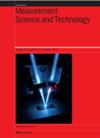Advanced robust control design and experimental verification for trajectory tracking of model-based uncertain collaborative robots
IF 3.4
3区 工程技术
Q1 ENGINEERING, MULTIDISCIPLINARY
引用次数: 0
Abstract
At the core of this research is the pursuit of enhancing the trajectory tracking performance of six-degree-of-freedom (6-DOF) collaborative robots, with a particular focus on addressing the challenges posed by uncertainties in real-world applications. One of the primary issues encountered with existing methods is the susceptibility of trajectory tracking to uncertainties, which can significantly hinder the performance of robotic systems. To address these challenges, we propose an advanced control method, known as the Model-based proportional-derivative controller, or MPDP controller for short, which represents an innovative fusion of model-based PD control principles with a robust control algorithm. This amalgamation is driven by the need to mitigate the impact of uncertainties and external disturbances on trajectory tracking. A comprehensive assessment grounded in Lyapunov theory has been undertaken to validate the effectiveness of our approach. The analysis has firmly established that our method ensures not only the ultimate boundedness but also the uniform boundedness of the robotic system, which is critical for its operational stability. Both experimental and simulation studies have been meticulously conducted to benchmark the performance of the MPDP controller against the conventional proportional-integral-derivative (PID) controller, which serves as a widely adopted baseline in the field. The results unequivocally demonstrate the superiority of the MPDP controller across multiple dimensions. It exhibits exceptional robustness, resulting in a smaller steady-state tracking error, a critical advantage when addressing inherent uncertainties and external disturbances that can perturb the robot system. This translates to a more stable trajectory tracking performance. Furthermore, the MPDP controller empowers the robot with the capability to precisely follow predefined trajectories, thus ensuring high-precision and reliable execution of tasks. This feature significantly contributes to an overall enhancement of system performance and productivity.基于模型的不确定协作机器人轨迹跟踪的先进鲁棒控制设计与实验验证
这项研究的核心是提高六自由度(6-DOF)协作机器人的轨迹跟踪性能,重点是解决实际应用中不确定性带来的挑战。现有方法遇到的主要问题之一是轨迹跟踪容易受到不确定性的影响,这会严重阻碍机器人系统的性能。为了应对这些挑战,我们提出了一种先进的控制方法,即基于模型的比例-派生控制器,简称 MPDP 控制器,它代表了基于模型的比例-派生控制原理与鲁棒控制算法的创新融合。这种融合是出于减轻不确定性和外部干扰对轨迹跟踪影响的需要。为了验证我们方法的有效性,我们以 Lyapunov 理论为基础进行了全面评估。分析表明,我们的方法不仅能确保机器人系统的最终约束性,还能确保其均匀约束性,这对其运行稳定性至关重要。我们进行了细致的实验和仿真研究,将 MPDP 控制器的性能与传统的比例-积分-派生(PID)控制器进行了比较,后者是该领域广泛采用的基准控制器。研究结果毫不含糊地证明了 MPDP 控制器在多个方面的优越性。它表现出卓越的鲁棒性,使稳态跟踪误差更小,这在解决固有的不确定性和可能扰乱机器人系统的外部干扰时是一个至关重要的优势。这意味着更稳定的轨迹跟踪性能。此外,MPDP 控制器还赋予机器人精确跟踪预定轨迹的能力,从而确保高精度、可靠地执行任务。这一特性极大地促进了系统性能和生产率的全面提升。
本文章由计算机程序翻译,如有差异,请以英文原文为准。
求助全文
约1分钟内获得全文
求助全文
来源期刊

Measurement Science and Technology
工程技术-工程:综合
CiteScore
4.30
自引率
16.70%
发文量
656
审稿时长
4.9 months
期刊介绍:
Measurement Science and Technology publishes articles on new measurement techniques and associated instrumentation. Papers that describe experiments must represent an advance in measurement science or measurement technique rather than the application of established experimental technique. Bearing in mind the multidisciplinary nature of the journal, authors must provide an introduction to their work that makes clear the novelty, significance, broader relevance of their work in a measurement context and relevance to the readership of Measurement Science and Technology. All submitted articles should contain consideration of the uncertainty, precision and/or accuracy of the measurements presented.
Subject coverage includes the theory, practice and application of measurement in physics, chemistry, engineering and the environmental and life sciences from inception to commercial exploitation. Publications in the journal should emphasize the novelty of reported methods, characterize them and demonstrate their performance using examples or applications.
 求助内容:
求助内容: 应助结果提醒方式:
应助结果提醒方式:


